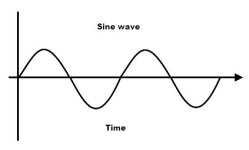Hi everyone,
I've recently been playing around with circuits on a breadboard and as I wade a little deeper I'm starting to come across VRef but I'm not completely understanding what it is or its function. Why is it necessary to have a virtual ground as opposed to GND?
For example, in the thread Opamps for Dummies part 2 and 3, https://forum.pedalpcb.com/threads/opamps-for-dummies-part-2.18899/ , by @Chuck D. Bones , what is Vref in relation to the TL072 in the circuit and where is it coming from? is it providing 4.5v to the opamp or is it another ground?
I hope this question makes sense, not sure it does myself haha.
I've recently been playing around with circuits on a breadboard and as I wade a little deeper I'm starting to come across VRef but I'm not completely understanding what it is or its function. Why is it necessary to have a virtual ground as opposed to GND?
For example, in the thread Opamps for Dummies part 2 and 3, https://forum.pedalpcb.com/threads/opamps-for-dummies-part-2.18899/ , by @Chuck D. Bones , what is Vref in relation to the TL072 in the circuit and where is it coming from? is it providing 4.5v to the opamp or is it another ground?
I hope this question makes sense, not sure it does myself haha.


